“APRIL” comes from the Latin “Aprillus” and means ‘to open’/’opening’ – referring to the opening of trees and flowers as Spring sets in. The month is variously said to be associated with the god Apollo and goddess Venus. Spring, Flowers, gentle showers, balmy breezes, mild sunshine – all have to add up to FUN-and-LOVE.
April has been much celebrated in songs. There are “April Showers” and “Sweet April.” Frank Sinatra and others sang “….April in Paris, This is a feeling no one can reprise….” Queen of the Portuguese sad/sweet songs, Fados, sang about the city of Coimbra and the song was later translated into English as the hugely popular “April in Portugal” – “I found my April dream in Portugal…..” “April Love” by Pat Boone, capped it all – “….April Love is all the seven wonders….”
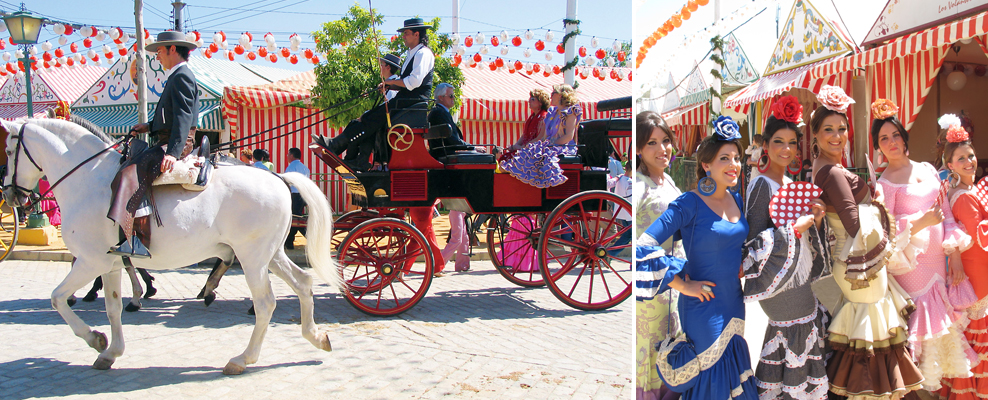
There must be many under the spell of ‘wonders’ like Paris and Portugal, but another of these wonders has to be April in Seville, in the Andalusia region of southern Spain. Seville has many claims to fame, including being home to Figaro, Carmen, Don Juan; being the resting place of Columbus who now ‘resides’ in its famous Gothic Cathedral; its renowned Alcazar Palace, Plaza de Espana, Maria Luisa Park and other attractions. Perhaps all these goodies do not quite elevate Seville to the status of a ‘wonder’. What definitely does make it a wonder is its being “….a contagiously romantic city whose celebratory ambiance pervades (its) winding streets and spills out of its bars and tapas parlors….” The city is at its romantic best during the week-long ‘Feria de abril de Sevilla’ (Seville April Fair). Spring is in the air, the sweet aroma of orange blossoms pervades. Seville comes alive with a shiver of anticipation for the massive celebration that is the April Fair.
The year of our Lord, 1847. Two councilors proposed that a livestock fair be held in Seville. Queen Isabel II agreed. The first fair was held on 18 April 1847. It took just one year for the air of festivity to transform the fair into a ‘happy happening’. The festivity-quotient kept on increasing till a peak was reached in the 1920s. Since then – for almost a century – the fair has grown in size, importance and festivities. At the last count, 5,000,000 people celebrated during the festival week, with 850,000 revelers just on the single night of Friday!
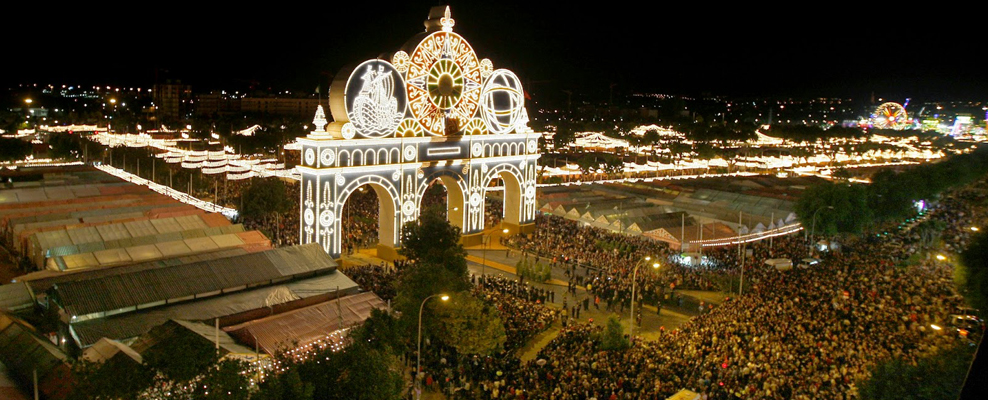
The fair officially starts at midnight on Monday, two weeks after the Easter Holy Week, and ends on the following Sunday. The start of the fair at midnight on Monday is the ‘alumbrao’ – the turning on of the lights at the elaborate façade – the Portaga – specially erected each year since 1949. This Monday night is called ‘la noche del pescaito’ (Night of the Fish). This night’s traditional dinner is Fried Fish and other fish dishes. The dinner is eaten before the lights are turned on and the fair officially starts.
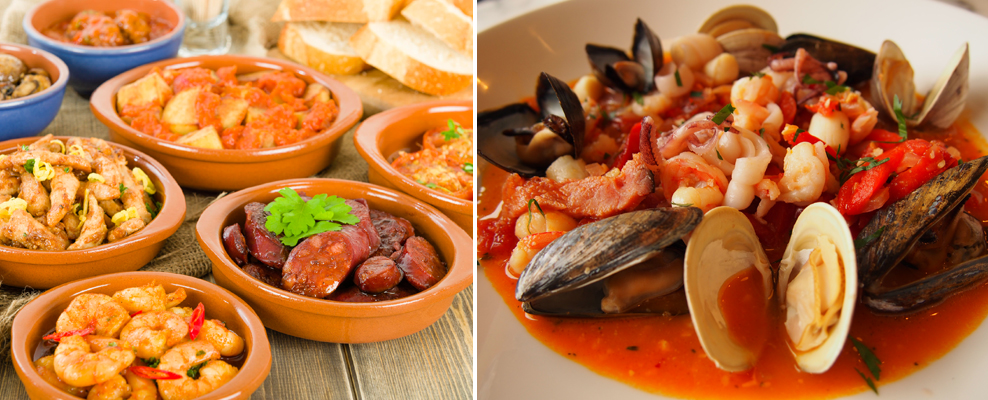
After the kick-off on midnight Monday, till Sunday next, it is a busy-busy, extremely hectic, happy- happy, noisy, fun-filled celebration, 24×7. Obviously, food and drink play a major role as a happiness-leading-to-excess factor. Typical Spanish food is the star. The most sought after are: Tapas, Fish and Seafood, Stews, Ham and Cheese. The Serrano hams are some of the best – and rather expensive – hams in the world. At the Fair, there is a great demand for the air-cured – for up to 24 months (?) – hams from Andalusia’s Granada and Huelva regions. Cheese – Spain has almost 400 kinds of local cheeses made from cow’s milk, goat’s milk, sheep’s milk and mixed milk. The best-known Spanish cheese is the Manchenga made from sheep milk. Andalusia has its Pedroches, Cabra Rayoya and Zutheros cheeses.
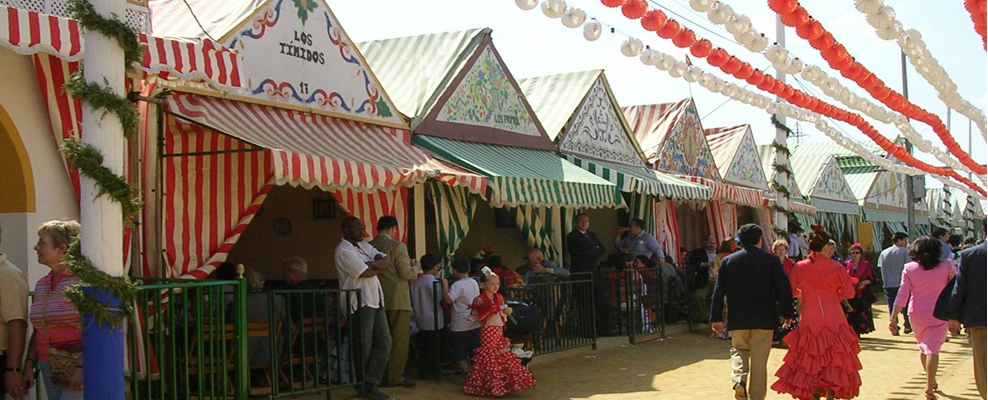
The April Fair action takes place in a tented city which comes up near the Rio Guadalquivir river. Over 1000 colorful marquee-tents, called ‘casetas’ are erected. Many of them host only private parties but there are quite a few open to public. Most of the drinking, eating, dancing and merry-making takes place in the casteas which turn into impromptu dance halls. The popular dances are the old-time ‘Sevillanas’, slow or fast, which covers many themes. These dances can be couple dances or group dances. Sevillanas are symbolic of Seville being perhaps the most important place of the flamenco-culture. Part of the fun is to wander around looking for the caseta which has vibes which appeal to you. You might look in at “Er 77” where wine is drawn from a well, or, poured from buckets. Should you have a drop too many, there are beds provided in the back area for you to sleep it off.
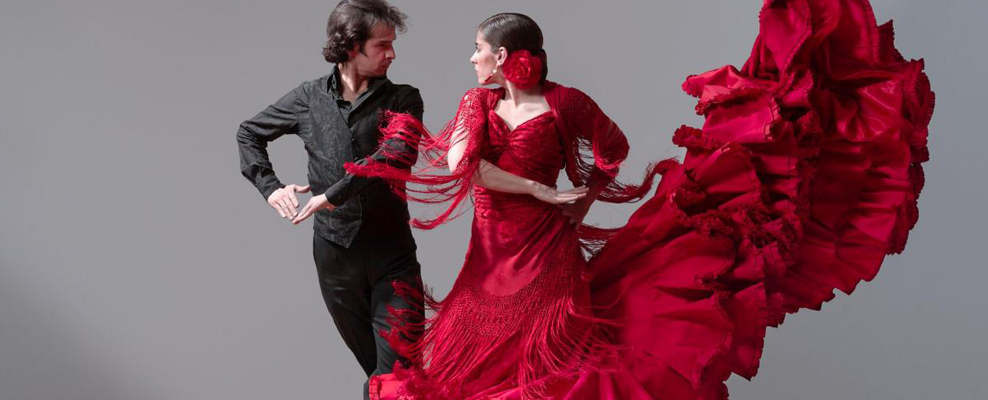
Each day of the Fair starts with parades of decorated horse carriages and men on horseback with their spouse alongside. These parades take place through the streets and in the fairgrounds, where only horse carriages are allowed. For the parades and for general participation the locals really dress-up. Women wear colorful polka-dot or other bright gypsy-origin flamenco-type stunning dresses. Men wear traditional clothing with large hats. The only way to describe the preening-and-the-parades is − ‘Spectacular.”
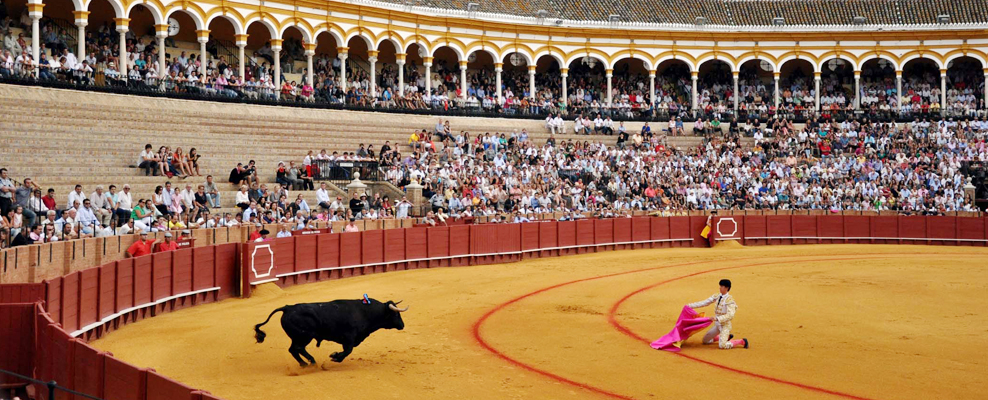
In the evenings, at around 18:30, there is perhaps the best bull-fighting of the year at the bull-ring of Seville, Plaza de Toros de Maestranza. A win here adds a great deal to the honor and prestige of the matador.
Great Food, Best of Spanish Wines and Spirits, Horses, Carriages, Flamenco-Sevillanas, Bull Fights, Music, Laughter, Friendships and Bonding, Merriment – A GRAND WEEK-LONG SPECTACULAR CELEBRATION. That is the Seville April Fair. The motto of Seville is an appropriate “WE LOVE PEOPLE.’
P.S. In case you want a different kind of fun, there is a nearby amusement park with over 100 attractions for Children. Grown -ups are not forbidden to enjoy the rides. BUT. The name of the amusement park is ‘La Calle del Infierno’ – ‘HELL STREET’!
